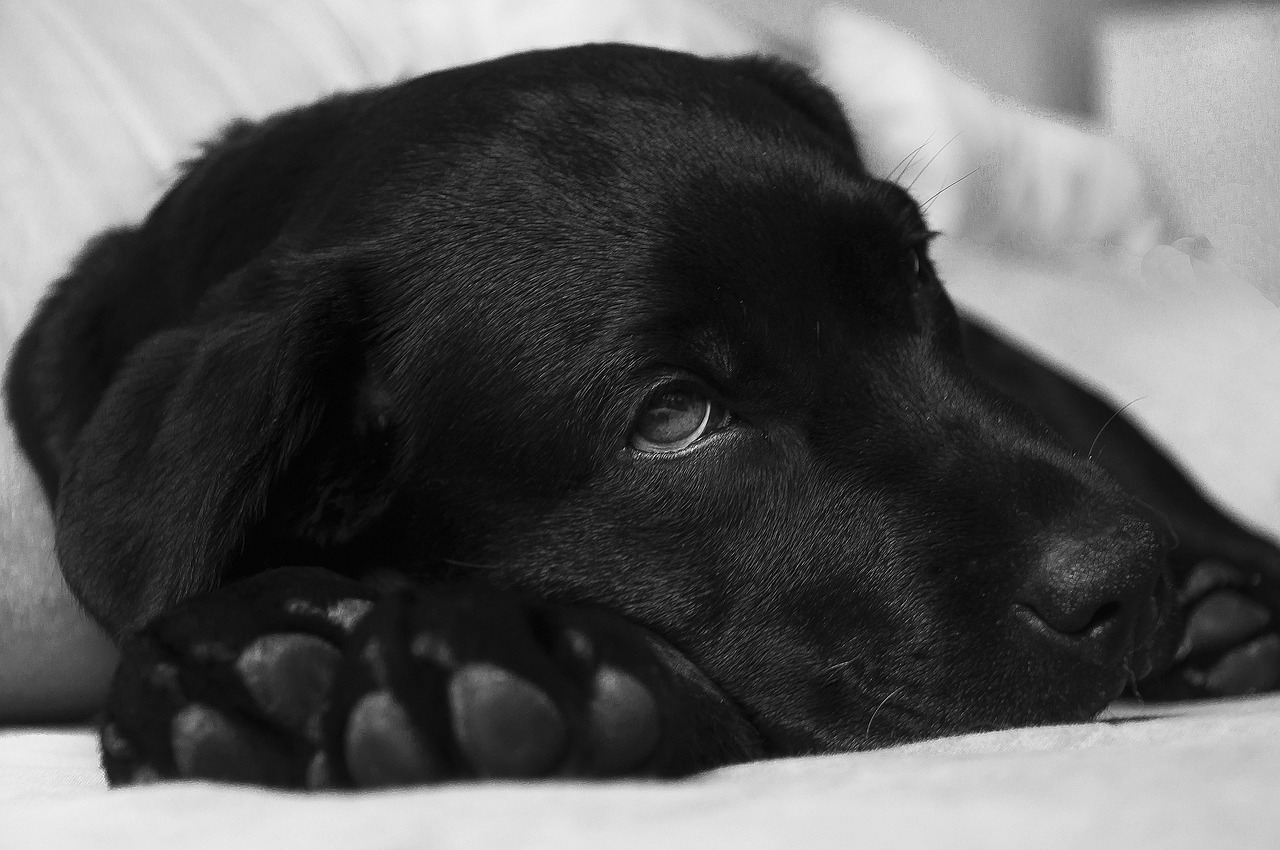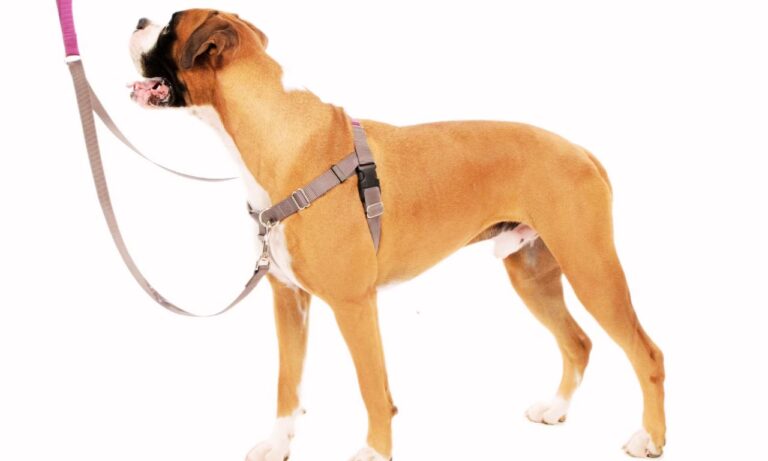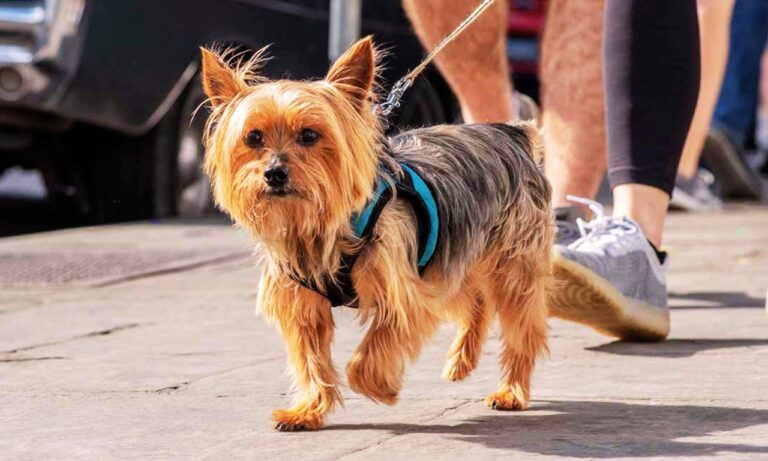| Summary: If your dog ate cat food and is now sick, monitor for vomiting, diarrhea, or lethargy. Offer water and withhold food for a few hours to ease digestion. If symptoms persist or worsen, contact your vet immediately. Cat food is rich and may cause stomach upset or pancreatitis in dogs. |
I recently experienced one of those heart-stopping moments every pet owner dreads: discovering that my beloved dog had eaten cat food—and now he was sick. So, if you are also with this issue, “my dog ate cat food and is now sick”! I will share my personal journey, the steps I took to help my dog recover, and what I learned about managing such emergencies. My hope is that by recounting my experience, you’ll be better prepared if a similar situation ever occurs. If your dog frequently gets into trouble, like eating cat food, a GPS dog collar can help you track their movements and prevent them from sneaking into places they shouldn’t.
Discover the perfect collar size for an Anatolian Shepherd Dog to ensure comfort and security for your furry friend.
Blog Highlights
ToggleMy Dog Ate Cat Food and Is Now Sick: A Shocking Discovery

It was an ordinary morning when I noticed something wasn’t right with my dog. Usually lively and energetic, he started acting lethargic and uncomfortable. At first, I couldn’t figure out what had changed until I discovered his food bowl contained cat food. I realized immediately that this wasn’t his regular meal, and the consequences were already unfolding.
I felt a surge of panic mixed with guilt—I had left the cat food unattended, and my curious dog had seized the opportunity. It was a mistake that no pet owner wants to make, but mistakes happen, and I was determined to handle the situation responsibly.
Learn more about the unique double-layered coat of an Anatolian Shepherd and how to care for it effectively.
The Unintended Meal: How It All Started
Looking back, it was a series of small oversights that led to this incident. In our busy household, the cat food was left within easy reach, and my dog’s natural curiosity got the best of him. It was a quick, impulsive grab, but the aftermath was not so fleeting. Within hours, my dog began showing signs of distress, and I knew I had to act quickly. From smart feeders to pet cameras, the right pet tech products can help monitor your dog’s eating habits and prevent them from accessing unsafe foods.
Here’s a brief timeline of the events:
- Morning Discovery: I found my dog near the feeding area, behaving unusually and with visible discomfort.
- Realization: Upon closer inspection, I discovered that he had consumed a significant amount of cat food.
- Initial Worry: I immediately sensed something was off when he began to show signs of lethargy and mild vomiting.
- Decision to Act: I decided not to wait and take immediate steps to address his health.
Why Cat Food and Dog Food Are Not the Same
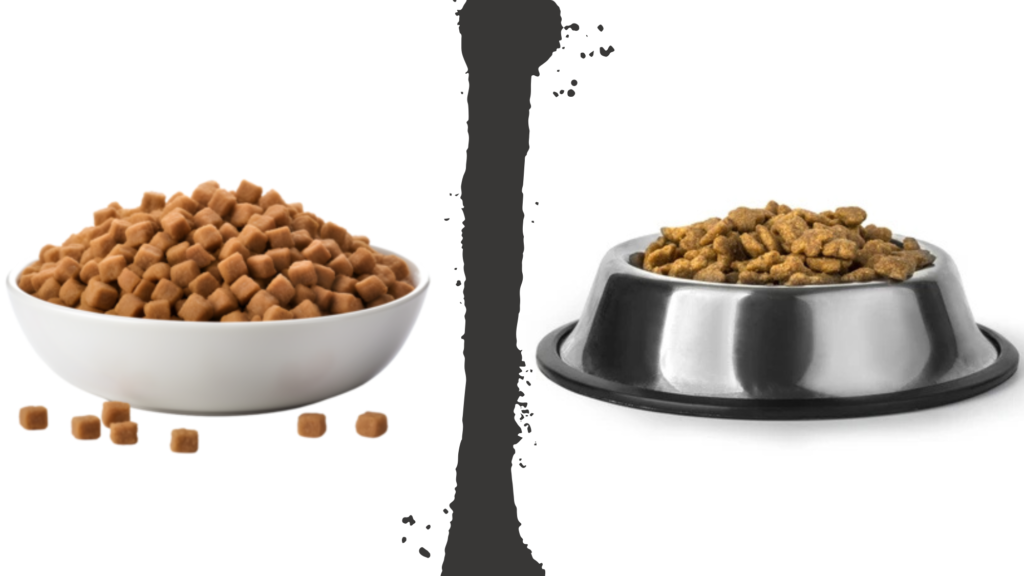
Before diving into what I did next, it’s important to understand why cat food can cause issues for dogs. Cats are obligate carnivores, meaning their diets are formulated with high protein and fat content to suit their unique metabolism. Dogs, however, are more adaptable omnivores and require a different balance of nutrients. Here are the key differences:
- Protein Overload: Cat food is typically much higher in protein, which, although essential, can be overwhelming for a dog’s digestive system.
- Excess Fat: The fat content in cat food is higher to meet a cat’s energy needs. This extra fat can lead to gastrointestinal upset and even stress the pancreas in dogs.
- Caloric Imbalance: Due to the concentration of fats, cat food is more calorie-dense. Even a small portion can significantly exceed a dog’s normal calorie intake.
- Specific Nutrients: Cat food often contains higher levels of taurine and vitamin A, which are not as critical for dogs and may disrupt their nutritional balance.
These differences mean that even a single meal of cat food can be too rich for many dogs, leading to the problems I witnessed firsthand.
For insights on whether Pomeranians should wear a collar, including considerations for safety and alternatives, check out this informative article.
Recognizing the Symptoms: What I Noticed
When my dog started showing signs of being unwell, I began monitoring him carefully. Recognizing the symptoms early can make a big difference in ensuring a swift recovery. Here are some of the warning signs I observed:

- Vomiting: Shortly after eating, my dog began vomiting. This was his body’s immediate reaction to the unfamiliar, rich food.
- Diarrhea: Over the next few hours, he experienced bouts of diarrhea, which worried me due to the risk of dehydration.
- Lethargy: Unlike his usual playful demeanor, he became unusually tired and spent most of the day resting.
- Loss of Appetite: He showed little interest in eating his normal food, which can further complicate recovery if his nutritional needs are not met.
- Abdominal Discomfort: I noticed he was sensitive when his stomach was touched, suggesting discomfort or pain.
Recognizing these symptoms early meant I could seek help before the situation worsened.
Taking Immediate Action: My First Steps
In any pet emergency, time is of the essence. Here’s what I did as soon as I noticed my dog’s distress:
- Removed Access to Cat Food: The very first step was to ensure that he couldn’t access any more cat food. I secured all food containers and made sure the feeding areas were separated.
- Provided Fresh Water: I encouraged him to drink water to help prevent dehydration, which is crucial when a pet is vomiting or has diarrhea.
- Monitored His Condition: I kept a close eye on him, checking his temperature, energy levels, and overall behavior. This helped me determine the severity of his condition.
- Called the Veterinarian: Realizing the situation might be serious, I promptly called my vet. Describing his symptoms over the phone, I received advice to bring him in for an examination.
These steps were guided by the knowledge that acting quickly could prevent further complications.
For a comprehensive guide on what kind of harness is best for a Pomeranian, including comfort and safety tips, check out this article.
The Veterinary Visit: Professional Help in Action
Taking my dog to the vet was one of the most stressful parts of the day. When we arrived at the clinic, the veterinarian quickly assessed his condition. Here’s what happened during the visit:

- Initial Examination: The vet conducted a thorough physical examination, checking his heart rate, temperature, and overall condition.
- Blood Work and Tests: To determine the extent of the nutritional imbalance and any potential damage, the vet performed some blood tests. This helped identify signs of dehydration and any markers of pancreatitis.
- Discussion of Diet: The vet explained that the high fat and protein levels in the cat food were likely the culprits behind my dog’s symptoms. They advised me that while a one-off incident might not cause permanent harm, it was crucial to monitor him closely.
- Treatment Plan: I was prescribed a bland diet for the next couple of days, consisting mainly of boiled chicken and rice. This would help settle his stomach and gradually ease him back into his normal diet.
- Medication: The vet also prescribed some medication to help reduce nausea and prevent further vomiting. Pain relievers were provided to ensure my dog wasn’t suffering unnecessarily.
The professional care he received was comforting, and it reassured me that we were on the right path toward recovery. A well-trained dog is less likely to scavenge food that could make them sick, and electronic collars can aid in reinforcing important training cues.
The Road to Recovery: Adjusting His Diet
After the vet visit, the next challenge was transitioning my dog back to his regular diet while ensuring his digestive system wasn’t overwhelmed. Here’s what I did:
- Bland Diet: For the first two days, I fed him a bland diet of boiled chicken and rice. This is a standard approach to help soothe an upset stomach.
- Small, Frequent Meals: Instead of a full meal, I offered him smaller, more frequent meals throughout the day. This helped prevent his stomach from becoming overloaded.
- Gradual Reintroduction: After a couple of days on the bland diet, I slowly began mixing in his regular dog food. I started with a small proportion of dog food and gradually increased it as his appetite improved.
- Hydration Focus: I ensured he had constant access to fresh water and even added a bit of broth (without seasoning) to encourage him to drink more.
This careful, gradual reintroduction was key to helping his digestive system recover and minimizing the risk of recurring issues.
Discover if the American Eskimo is a guard dog and learn about its suitability for protecting your home.
Learning from the Incident: What I Changed at Home
The whole episode was a wake-up call, and I knew I had to make changes to prevent it from happening again. Here are some of the adjustments I made in our household:
- Separate Feeding Zones: I now feed my cats and dogs in completely separate areas. This simple change helps prevent any accidental cross-feeding.
- Secure Storage: All pet food is stored in locked cabinets or on high shelves where curious dogs can’t reach them.
- Clear Labels: I labeled all food containers clearly and kept a dedicated feeding schedule for each pet. This minimizes the risk of mix-ups during busy mornings or evenings.
- Regular Monitoring: I’ve started to monitor both my pets more closely during meal times to ensure they’re eating the correct food.
- Emergency Supplies: I now keep a small emergency supply of my dog’s regular food, so if the usual food runs out, I have a safe alternative readily available.
Implementing these changes has given me peace of mind and helped create a safer environment for all my pets.
Understanding the Science: Why Does This Happen?
I took some time to read up on pet nutrition to better understand why my dog’s body reacted so adversely to cat food. Here are some scientific insights that I found particularly helpful:
- Metabolic Differences: Dogs and cats have evolved with different metabolic needs. While cats thrive on a high-protein, high-fat diet, dogs require a more balanced mix that includes carbohydrates. The sudden shift can disrupt a dog’s metabolism, leading to digestive distress.
- Pancreatic Stress: The pancreas in dogs is sensitive to high-fat diets. When it’s overloaded, it can lead to pancreatitis—a serious condition that causes inflammation and pain.
- Gastrointestinal Sensitivity: A dog’s digestive system is not equipped to process the concentrated nutrients found in cat food. This can result in vomiting, diarrhea, and discomfort as the body attempts to rid itself of the excess nutrients.
Understanding these factors made me realize that even a single incident could have long-lasting effects if not managed properly.
Emotional Turmoil: Coping with Worry and Guilt
Beyond the physical symptoms and medical interventions, the emotional impact of the incident was profound. I experienced a whirlwind of emotions—from guilt over my oversight to anxiety about my dog’s wellbeing.
I found that talking to fellow pet owners, reading online forums, and even joining a pet owner support group helped me navigate these emotions. It was important for me to acknowledge my feelings and learn that mistakes, while painful, are opportunities for growth and better care in the future.
Learn about the size collar for an American Eskimo to ensure a perfect fit and comfort for your dog.
Practical Steps for Other Pet Owners
If you ever find yourself in a similar situation, here are some practical steps based on my experience:
- Act Quickly: Do not hesitate to remove any potential hazards and seek veterinary advice immediately if your dog shows signs of distress.
- Stay Informed: Understand the nutritional differences between your pet’s food. Knowledge is your best tool in preventing and managing emergencies.
- Maintain Clear Boundaries: Set up designated feeding areas and store food securely. This minimizes the risk of accidental ingestion.
- Keep Emergency Contacts Handy: Always have your veterinarian’s contact information readily available, and consider saving the number of an emergency pet clinic.
- Monitor and Document: Keep a diary of any symptoms or changes in behavior. This can be invaluable when discussing your dog’s condition with a vet.
- Trust Your Instincts: As a pet owner, you know your pet better than anyone. If something feels off, seek help immediately.
Preventive Measures: Creating a Safer Environment
Preventing a recurrence of such an incident starts with making your home as pet-proof as possible. Here are some additional tips that worked for me:
- Regular Checks: Periodically review the areas where pet food is stored and fed. Ensure that no food is left accessible to the wrong pet.
- Educate Family Members: Make sure everyone in the household is aware of the importance of keeping pet food separate. A well-informed family can help prevent careless mistakes.
- Use Childproof Locks: Sometimes, childproof locks can be a useful tool for keeping both pets and curious children from accessing food meant for another animal.
- Invest in Quality Feeding Equipment: Consider using feeders designed specifically for each pet’s needs. Some feeders have sensors or mechanisms that prevent one pet from accessing another’s food.
Looking Back: The Lessons Learned
This experience has been one of the most challenging yet educational events in my life as a pet owner. The ordeal of watching my dog suffer because of a simple oversight taught me several valuable lessons:
- Vigilance Is Key: Never assume that a busy day excuses lapses in pet safety. Consistent vigilance can prevent many emergencies.
- Preparedness Matters: Always have a backup plan, including an emergency supply of your dog’s food and clear protocols for feeding.
- Open Communication: Don’t hesitate to seek advice from veterinarians and share your experiences with other pet owners. The collective wisdom can be incredibly reassuring.
- Self-Compassion: It’s important to forgive yourself for mistakes. What matters most is that you learn from them and take steps to ensure the safety and health of your pets in the future.
My Ongoing Journey to Recovery
Since the incident, my dog has thankfully made a full recovery, and he is back to his playful self. However, the experience has left a lasting impact on how I manage our household and approach pet care. I have become more proactive, more informed, and more cautious—traits that I believe are essential for any responsible pet owner.
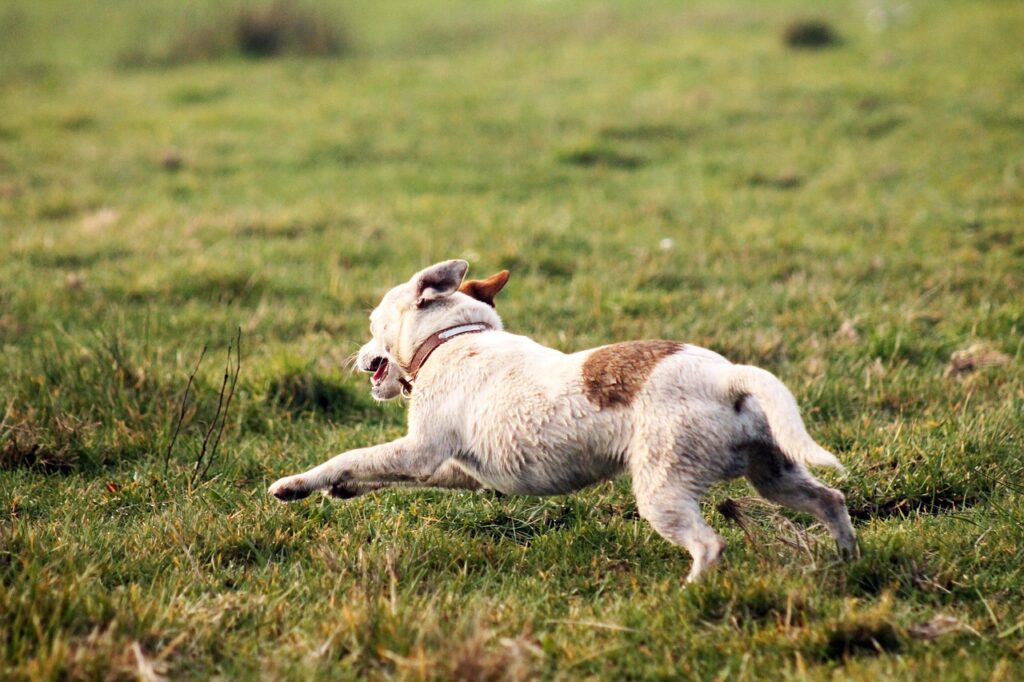
I continue to monitor his diet closely, and I make it a point to revisit pet nutrition articles, attend webinars, and even participate in local pet care workshops. These ongoing efforts not only reassure me but also help me spread awareness among fellow pet owners.
Final Thoughts:
In the end, while the day my dog ate cat food and fell ill was one of the scariest moments of my pet ownership journey, it also became a catalyst for positive change. I learned the hard way about the significant nutritional differences between cat and dog food, the potential risks of dietary mishaps, and the importance of quick, decisive action in emergencies. Using the right training tools, like clickers and treat dispensers, can help teach your dog to avoid cat food and respond to commands during an emergency.
Hope so, now you know the answer to your question, “my dog ate cat food and is now sick, what to do?”. Discover why Afghan Hound collars are wide by exploring the unique characteristics of this breed and how wide collars enhance their comfort and style.
I now advocate strongly for preventive measures and proper pet nutrition. My experience is a reminder that even when things go wrong, we have the opportunity to learn, adapt, and ultimately create a safer environment for our furry family members.

